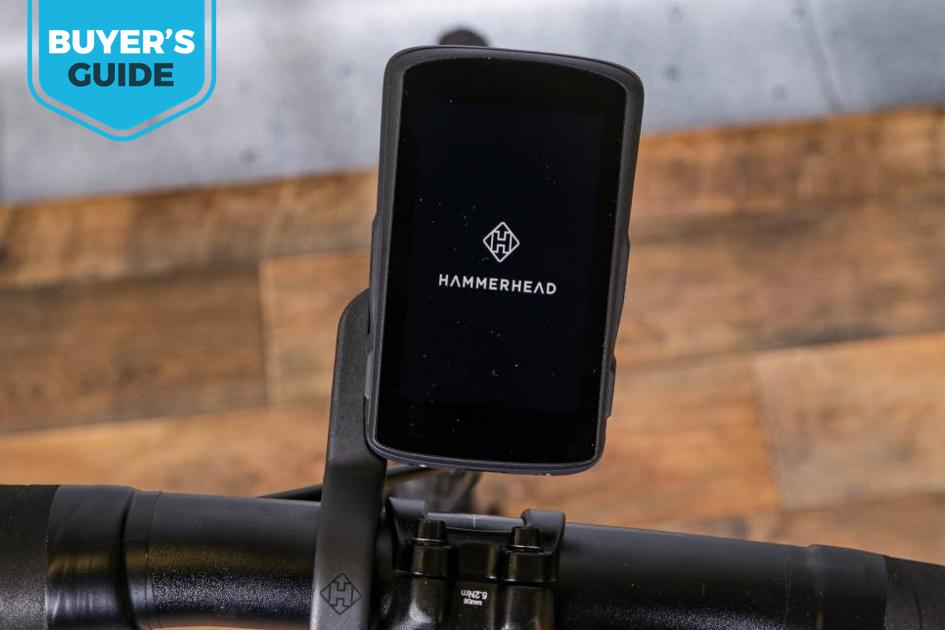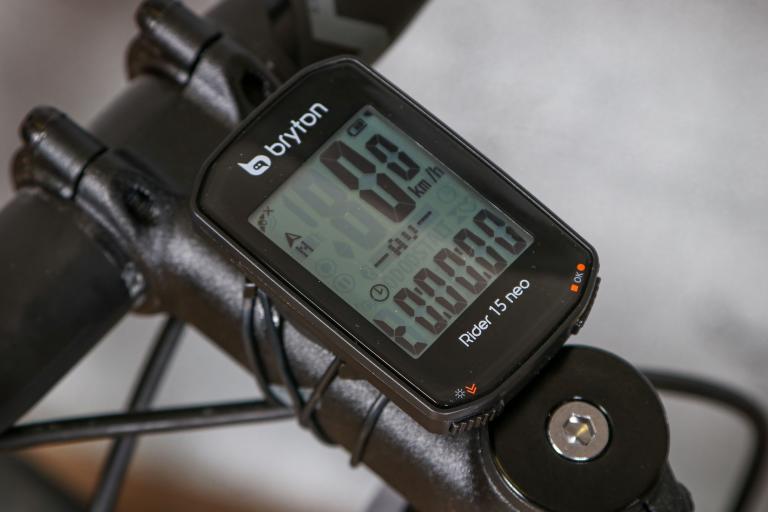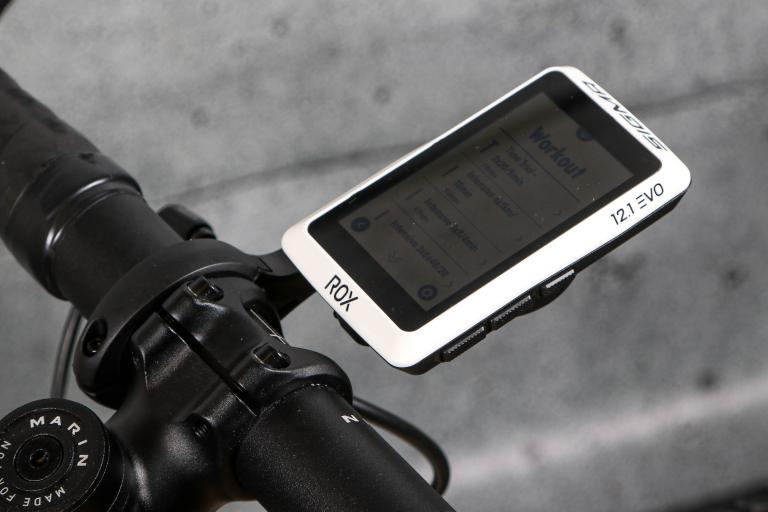Standard computer functions
Like any conventional non-GPS computer, a GPS unit will tell you your current speed, distance, ride distance, average speed, maximum speed and so on.
Since there’s a fairly powerful little processor sitting in most GPS units, designers tend to include just about every speed/distance/time function you can think of.
For example, some of Garmin’s GPS units have a feature called ‘virtual training partner’ which pits you against an electronic competitor who’s doing a set average speed, or against yourself the last time you rode a course.
Heart rate functions
Many GPS units come with a heart rate strap, or will work with one, usually using the ANT+ protocol.
Power functions
If you have a power meter, many GPS units will work with it to record your power data along with your ride and heart rate data, and display a range of measurements and averages so you can confirm that the reason you feel like you’re working your arse off is that you’re working your arse off.
Training functions
With a programmed workout sequence, many GPS units can do the brain work of counting intervals or timing efforts for you, feeing you up to concentrate on the effort itself. Some also have in-built fitness tests or can monitor your training effort and load so you don’t overdo it.
Geographical functions
These include both navigation and route recording, functions that are unique to GPS units. If you simply want to get somewhere, almost all mapping GPS units let you put in a destination as a postcode, name of a village or point of interest and will then give you directions to it, usually with turn-by-turn warnings as you approach junctions. However, even when you use a setting like ‘avoid major roads’ GPS map data often doesn’t differentiate between a quiet minor road and a dual carriageway A road, which can lead to some interesting route choices.
A better idea is to plan your route in advance using either the GPS maker’s own tools, such as Garmin Connect, or one of the many route-planning websites out there. Transfer the route to your GPS and you can then follow it exactly.
Recording a route lets you follow it exactly on a future ride — handy if you’re being guided — and has opened the door to competing against friends and strangers online through Strava. If you’re following a planned route, then the unit can tell you how far it is to your destination or to the next landmark. It can usually also work out how long you’ll take to get there based on your speed so far.
If you’re happy to really roll the dice on where your ride takes you, some GPS units can generate a random route of a specified length, an entertaining gimmick that can be useful for exploring new areas. Routing GPS units will still give you turn-by-turn directions so you can follow a pre-loaded route. The display in these situations is usually a line showing you the upcoming turn.
Time functions
As well as the obvious — time of day, ride time, stopwatch and so on — GPS units often have extra time functions that depend on satellite data. These include sunset and sunrise times and automatic lap time functions based on detecting the spot where you started.
Altitude functions
GPS units can work out your altitude from satellite data, but this doesn’t tend to be very accurate. Altitude data usually comes from a barometric altimeter, which uses atmospheric pressure to determine your height above sea level.
Barometric altimeters are susceptible to errors caused by changes in the weather, but if you upload your ride data to a ride-sharing site you will often be able to correct the elevation readings. Having an altimeter lets you see extra information like how fast you’re climbing and the gradient so you can confirm that killer hill really is insanely steep. Or that you're just hideously unfit.
Wireless communication functions
It’s common for GPS units to have the ability to communicate wirelessly with other devices or sensors, using low-power wireless communication protocols such as Bluetooth and ANT+. This is usually how GPS units communicate with cadence sensors, heart rate monitor straps, power meters, phones and even other GPS units. Some GPS units are able to use your home wi-fi to upload your ride, and will do so automatically for you. If you have electronic gears many GPS units can get data from them and tell you which gear you're in too.
The advent of Bluetooth Smart means many units are in constant contact with your phone, and can display text and call alerts.

























Add new comment
12 comments
I got the velo2, recently, for use on my old hybrid for finding my way around London. I'm a bit wary of cycling around with a smartphone in full view and this is very small and unobtrusive. The mapping is very clear easy to follow, but the routing can sometimes be a bit hit and miss. You can very easily import a gpx route though from apps that do better routing such as cycle.travel.
I have an older b/w Elemnt Bolt, which is perfect, apart from its dumb navigation. I'd love a Karoo, but since SRAM bought Hammerhead and Shimano withdrew authorisation to connect to Di2, it's not an option for me. Seeing and recording gears is a very useful function. I never realised before getting Di2 how much I used to look down at my cassette!
There's an unofficial workaround for Di2 connection, search for "karoo ki2". You would have to understand any risks associated with side-loading 3rd party APK files, and your mileage may vary, device maybe at risk, guarantee of past performance does not indicate future success, etc. Doesn't record to FIT file (yet)
Write-up here: https://www.dcrainmaker.com/2022/12/hammerhead-karoo-2-shimano-di2-worka...
Thanks. I'll take a look.
I've had my Karoo 2 for about 8 months now and I would never go back to a Garmin after years of battling with a 530. Might be better at the higher price points I don't know, but everything in the K2 just works, no hassles, totally intuitive, updated regularly, super easy to use.
What battles did you suffer with the Garmin for so many years?
All sorts! Failing to sync after rides; crashes; failing to get new routes on there with any reliability; and rerouting that consisted of 'do a u-turn' for miles on end. Mind you I still use the 530 to do ERG on my turbo trainer so it's still useful.
Just for balance, I've had years of problem-free* riding in the Garmin ecosystem (head units, lights, radar, sensors, watches) and have never been tempted away. Head units 520, 820, 1030, 1030 Plus, 1040 Solar.
* the 1040 had some sensor related issues that were resolved within two iterations of firmware. In my opinion it was launched 3 months before ready, but the battery life is phenomenal, and reliable since aforementioned updates.
Not a general dig at garmin! I have a varia and I bloody love it. And had a watch for years and years with no issue before losing it in the ocean
So no problems syncing in the ocean?
I like your whole 'I won't add anything to the conversation, I'll be a snarky jerk' vibe. It's ace. Merry Christmas
FWIW, I thought the syncing comment was funny rather than sarky. Then again it wasn't my watch that sanc/synced.